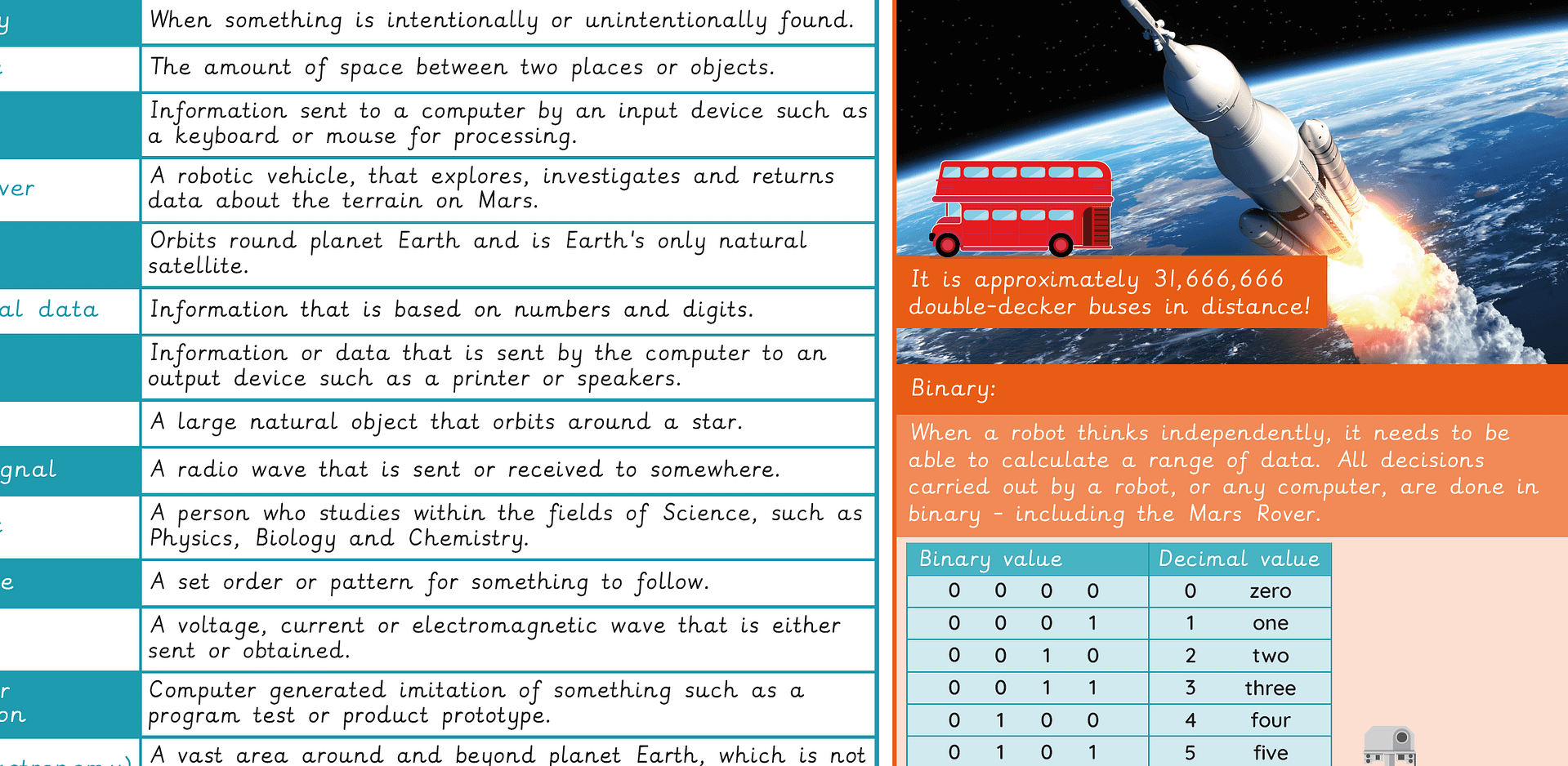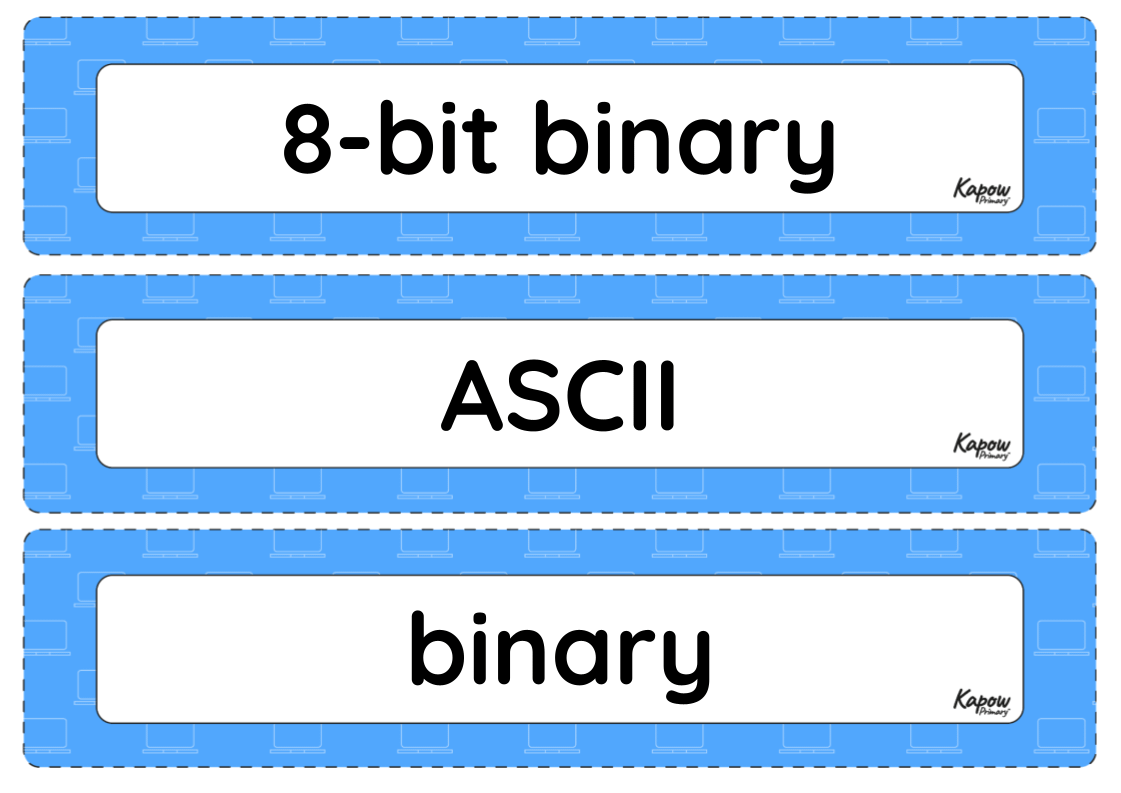Mars Rover 1
Identifying how the Mars Rover collects different types of data and transmits this back to Earth using binary code.
The Curriculum and Assessment Review final report has been released. We’re reviewing the recommendations and planning for future updates. Learn more
- Subjects >
- Computing >
- Key stage 2 >
- Year 5 >
-
Data handling: Mars Rover 1
Unit outcomes
Pupils who are secure will be able to:
- Identify some types of data the Mars Rover could collect (for example, photos).
- Explain how the Mars Rover transmits the data back to Earth and the challenges involved.
- Read any number in binary, up to eight bits.
- Identify input, processing and output on the Mars Rovers.
- Use a column method to add two 8-bit binary numbers.
- Relate binary signals (Boolean) to a simple character-based language, ASCII.
Suggested prior learning
Data handling: Investigating weather
Get startedLessons
Lesson 1: Mars Rover
- To identify how and why data is collected from space.
Lesson 2: Binary code
- To read and calculate numbers using binary code.
Lesson 3: Computer architecture
- To identify the computer architecture of the Mars Rovers.
Lesson 4: Using binary – numbers
- To use simple operations to calculate bit patterns.
Lesson 5: Using binary – text
- To represent binary as text.
Key skills
Key knowledge
Related content
Resources
Unit resources

Computing
Knowledge organiser – Computing Y5: Mars Rover 1
Aimed at pupils, a single page which gives key facts and definitions from the unit "Data handling: Mars Rover 1".

Computing
Vocabulary display – Computing Y5: Mars Rover 1
A display version of the key vocabulary from the Mars Rover 1 unit.
Cross-curricular opportunities
Maths: Measurement; Number – number and place value; Number – multiplication and division.
Science: Earth and space.

